Hummingbirds feed on the nectar they find in the center of blooming flowers. Many gardeners and bird watchers plant flowers or vines specifically hoping that hummingbirds will visit their outdoor spaces to feed. Besides those kinds of plants, there are many kinds of flowering shrubs that hummingbirds love! Flowering shrubs work well in a garden layout to create natural barriers and dividers. Let’s look at some flowering shrubs that are not only functional within your green space, but will attract those beautiful hummingbirds!
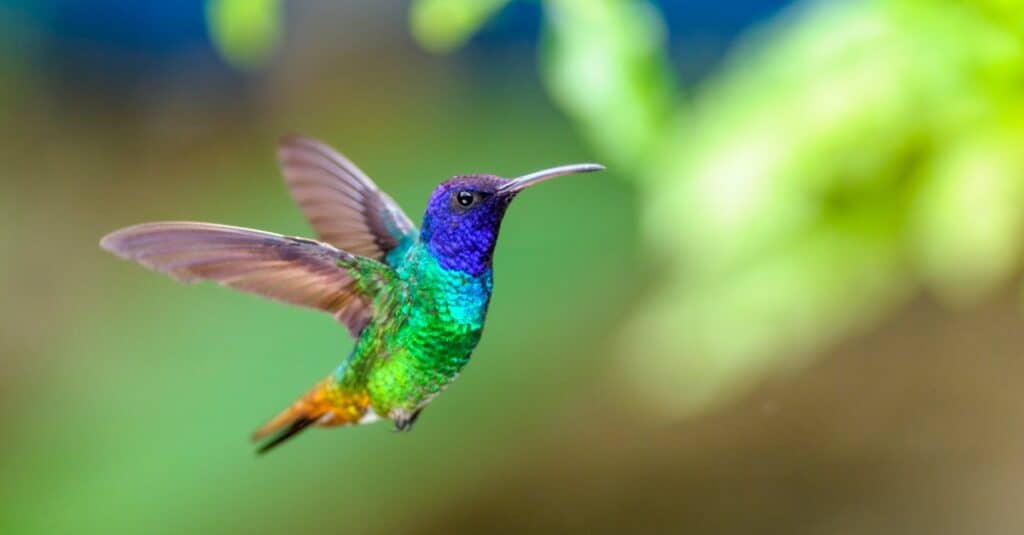
Hummingbirds beat their wings up to 90 times per second, a fascinating feat to watch.
©iStock.com/photofxs68
1. Butterfly Bush (Buddleia davidii)

The
butterfly
bush is native to China.
©M9K/Shutterstock.com
Despite its common name, butterfly bush isn’t just for butterflies. Hummingbirds are attracted to its colorful tubular flowers as well. Although the plant reaches heights of 12 feet, its growth can be controlled by pruning. Even so, some areas of the U.S. have classified the butterfly bush as an invasive species. Check with your local agricultural extension office before planting. Blooming begins in summer. Removing dead flowers from the shrub will allow new blooms to appear, allowing hummingbirds to continue visiting your garden throughout the warm season. Butterfly bushes are hardy in zones 5-9.
2. Catawba Rhododendron (Rhododendron catawbiense)
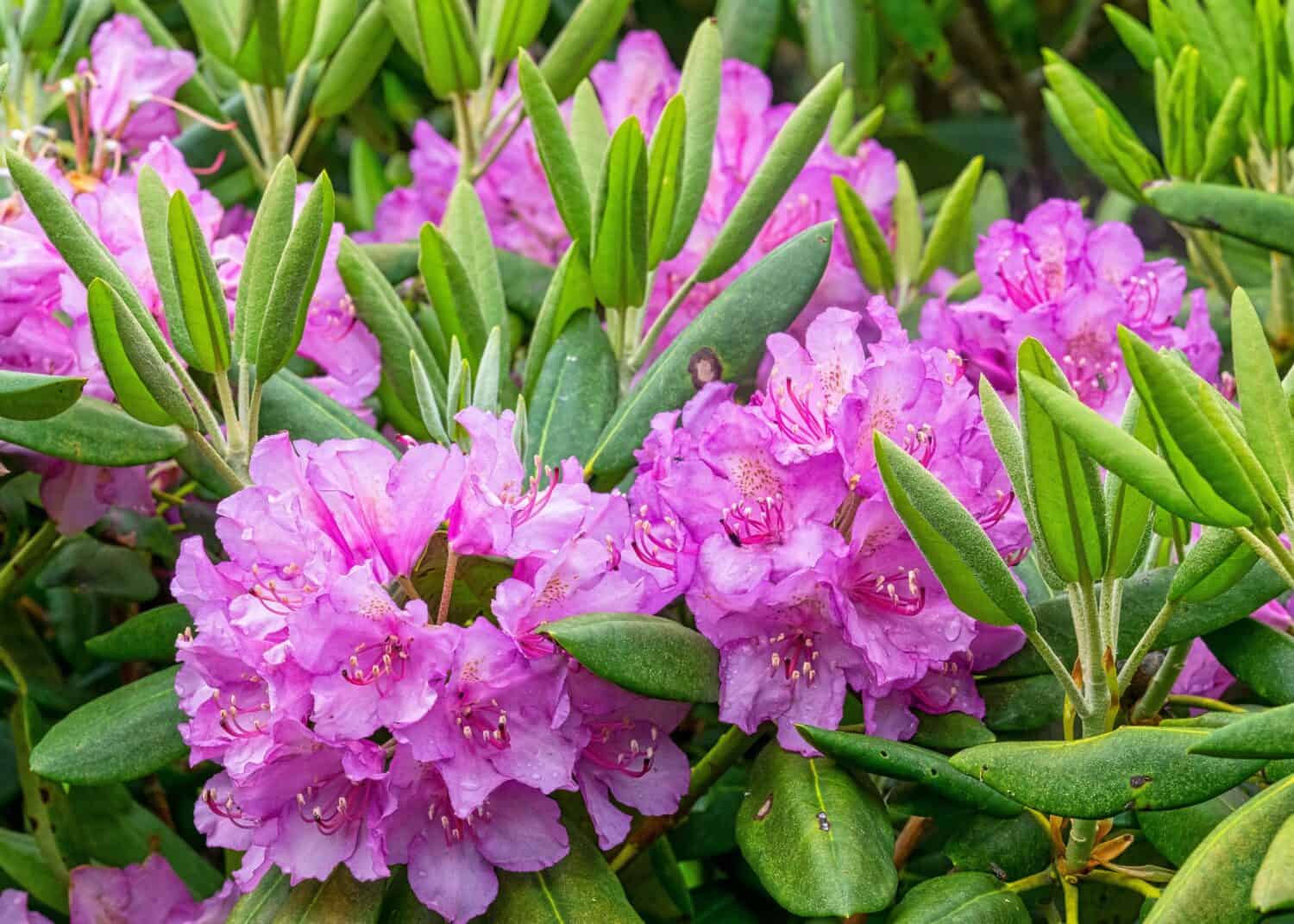
Catawba rhododendrons can live up to 75 years.
©Donna Bollenbach/Shutterstock.com
There are many types of rhododendron to choose from, but the Catawba rhododendron draws hummingbirds to its funnel-shaped flowers. The plant begins to flower in mid-to-late spring. Hummingbirds love the nectar the flowers produce. If you choose to introduce this plant to your outdoor space, take care to keep other animals away from it. Catawba rhododendrons are toxic to cats, dogs, and horses. Hardy in zones 4-8, the Catawba rhododendron does best in partial shade.
3. Rose of Sharon (Hibiscus syriacus)
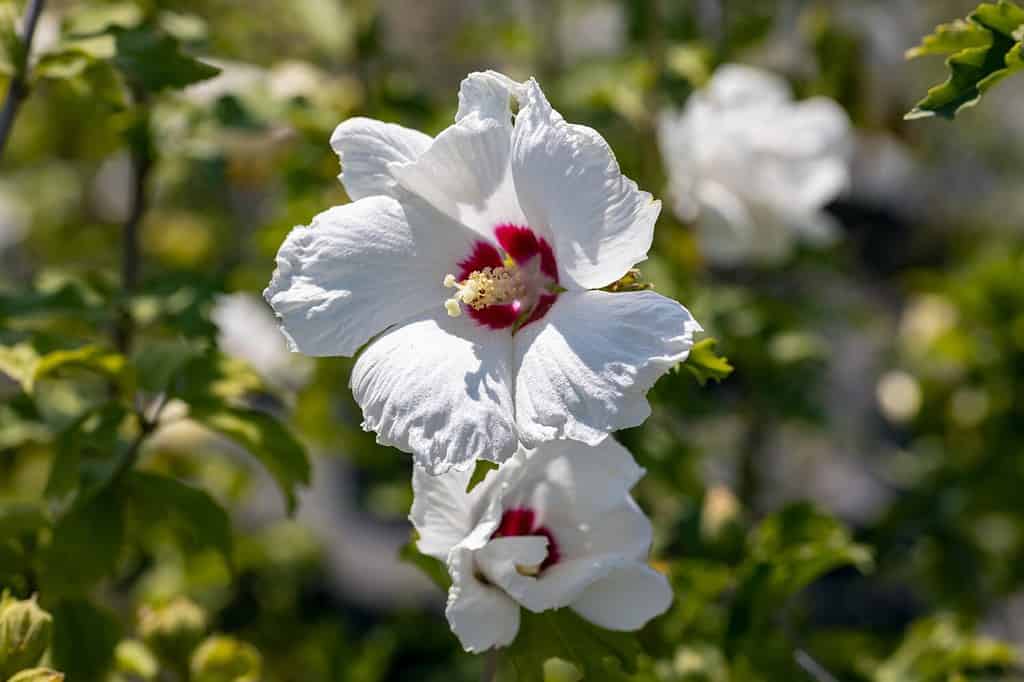
The Rose of Sharon isn’t a rose at all, but a kind of hibiscus.
©Fabrizio Guarisco/Shutterstock.com
Rugged and drought-tolerant, the Rose of Sharon is low-maintenance and easy to grow. Not only is it simple to take care of, but it attracts both hummingbirds and butterflies into your outdoor areas. It has a long blooming season, normally from midsummer into the fall. Hummingbirds are drawn to the color of the flowers and the long stamen tube rising from the center of the bloom. Because of its tendency toward aggressive self-seeding, the Rose of Sharon has been classified as invasive in Pennsylvania, Kentucky, Tennessee, and Virginia. Considered hardy in zones 5-9, the Rose of Sharon should be pruned hard in the winter to encourage larger blooms during the growing season.
4. Glossy Abelia (Linnaea x grandiflora)

A hybridized plant, glossy abelia originated in Italy during the 1800s.
©Traveller70/Shutterstock.com
Growing as tall as six feet tall, the glossy abelia exhibits bell-shaped flowers. That shape allows hummingbirds to insert their long beaks and withdraw nectar from within. Glossy abelia normally begins blooming in the late spring, with flowers often remaining on the plant until fall. Blooms grow on new wood, and pruning is recommended after the flowers die off. This shrub thrives in areas with moist soil and full sun to partial shade. Glossy abelia is hardy in USDA zones 5-9.
5. Crepe Myrtle (Lagerstroemia indica)

Both “crepe myrtle” and “crape myrtle” are accepted spellings of this plant’s common name.
©meteorite/Shutterstock.com
Prevalent in warmer climates, the crepe myrtle normally blooms from late June into September. When other sources of nectar have begun to die off, the crepe myrtle will still be attracting hummingbirds into your yard. The blooms, often pink or red, are thin and delicate like crepe paper. Although planting the crepe myrtle in full sun will result in the most flowers, this shrub also does well in partial shade. Once well-established, the crepe myrtle is drought-tolerant. Crepe myrtles are cold hardy in USDA zones 7-10.
6. Summersweet (Clethra alnifolia)
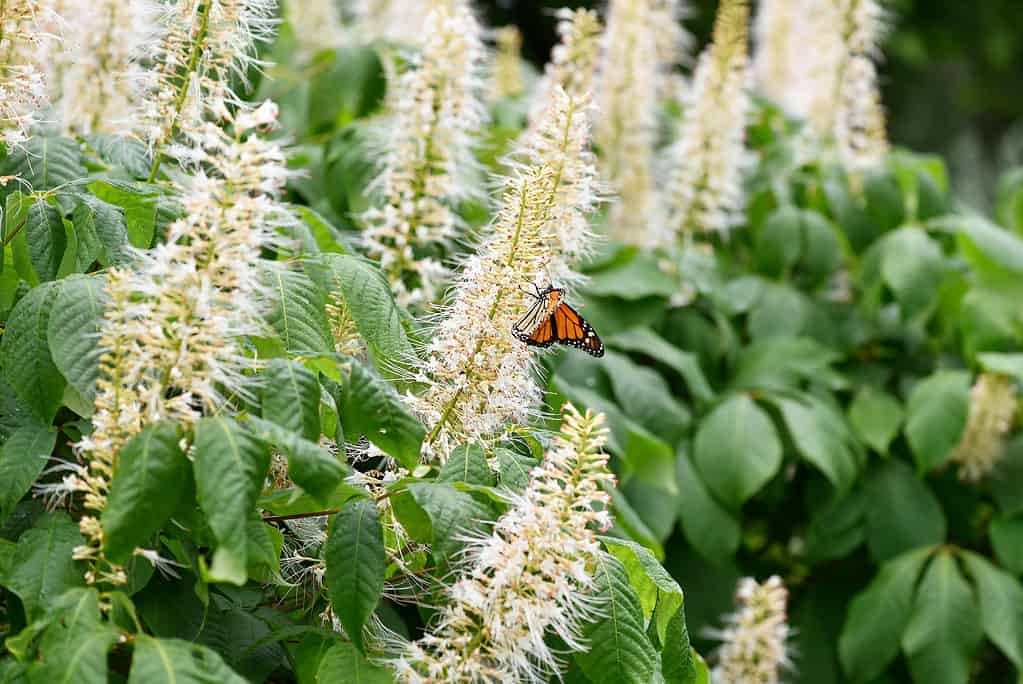
Cottage gardens or wild gardens are great places to plant summersweet.
©Lana B/Shutterstock.com
Planting summersweet ensures hummingbirds will visit your garden even as fall approaches. Boasting spikes of white flowers, summersweet blossoms open from bottom to top. Blooms appear in late summer when other sources of food are becoming scarce. Summersweet is notable for its ability to bloom in the shade! Deer tend to ignore summersweet as a food source. This plant is hardy in zones 3-9 and does well in sandy soil.
7. Sweet Viburnum (Viburnum odoratissimum)
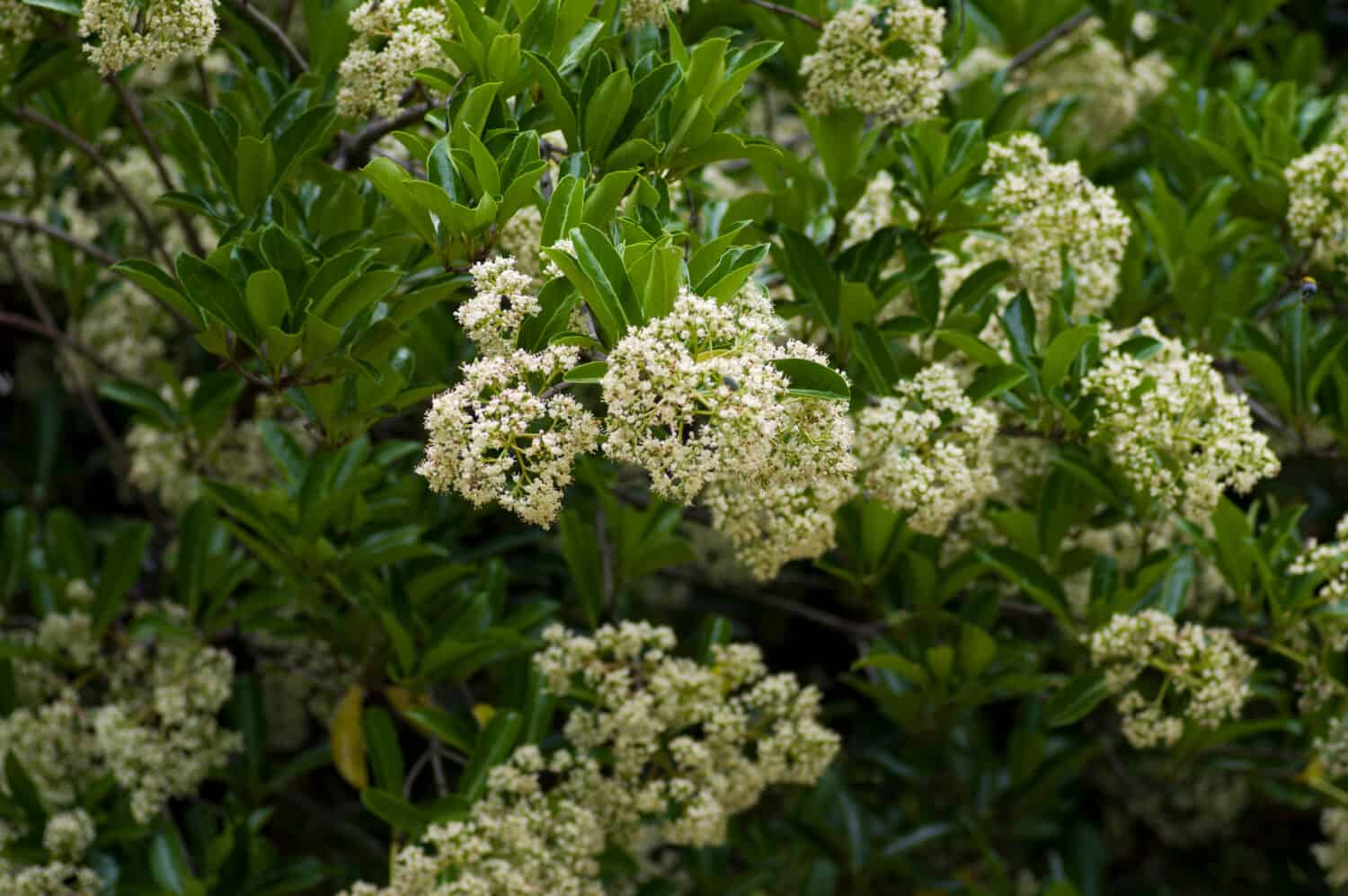
The epithet “
odoratissimum” of sweet viburnum means “most fragrant” in Latin.
©zzz555zzz/Shutterstock.com
Landscapers have often chosen sweet viburnum as a natural privacy screen or hedge. In the spring, sweet viburnum produces clusters of small white flowers that hummingbirds visit for nectar. The flowers are white, fragrant, and funnel-shaped, but they don’t last long. The blooming season for sweet viburnum is usually from early spring through June. After that, hummingbirds will search for other flowering shrubs from which to feed. Resistant to both humidity and drought, sweet viburnum should thrive in zones 7-9.
8. Weigela (Weigela florida)

Prune your weigela in wintertime after the last flowers have gone.
©krolya25/Shutterstock.com
Part of of the honeysuckle (Caprifoliaceae) family, the weigela can offer some surprises. In the mid-to-late spring, the weigela exhibits beautiful rose-colored blooms that entice hummingbirds to visit and feed. After approximately two weeks, those flowers go away. During the summer, however, blooms can reappear at any time! Hummingbirds could come back to your weigela whenever flowers pop out. Full sun is best for weigelas, along with moist, well-drained soil. Weigela is hardy in zones 4-8.
9. Flowering Quince (Chaenomeles speciosa)
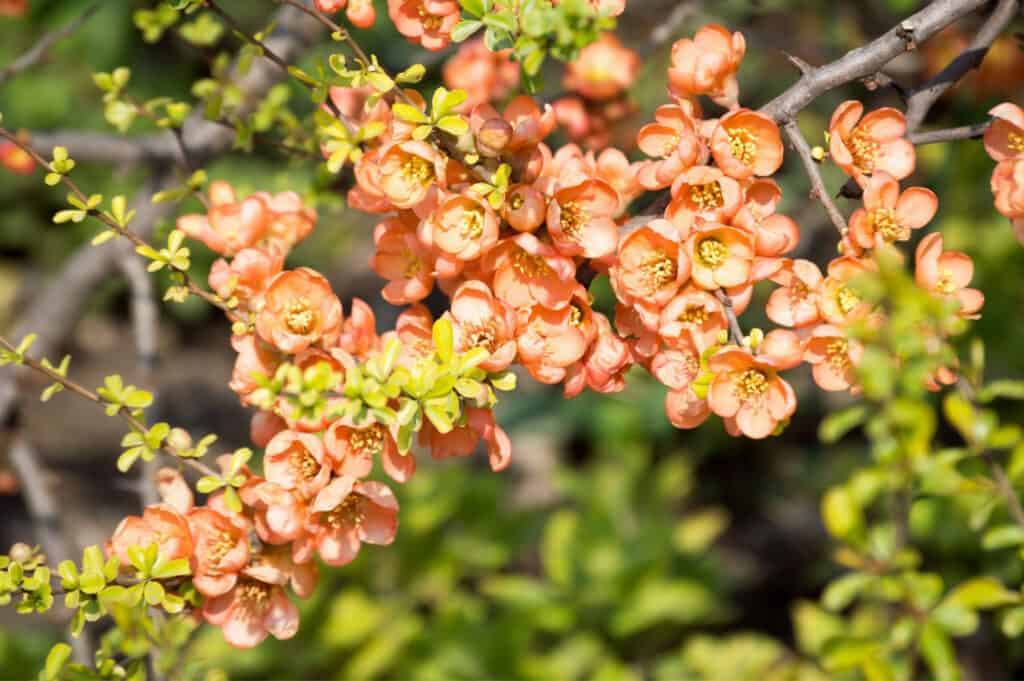
This shrub produces quince fruit, which can be made into jams and jellies.
©irisff/Shutterstock.com
One of the first plants to bloom during the year, the flowering quince produces flowers from March to April. That’s great for hummingbirds because those red-hued blooms provide nectar during the last remnants of winter. However, those flowers are short-lived. Blooms of the flowering quince only last about two weeks before fading away. Flowering quinces are often thorny, so be careful when handling the branches. The plant is relatively easy to care for, preferring full sun and moist, well-drained soil. Flowering quince is considered hardy in zones 4-8.
10. Bluebeard (Caryopteris x clandonensis)
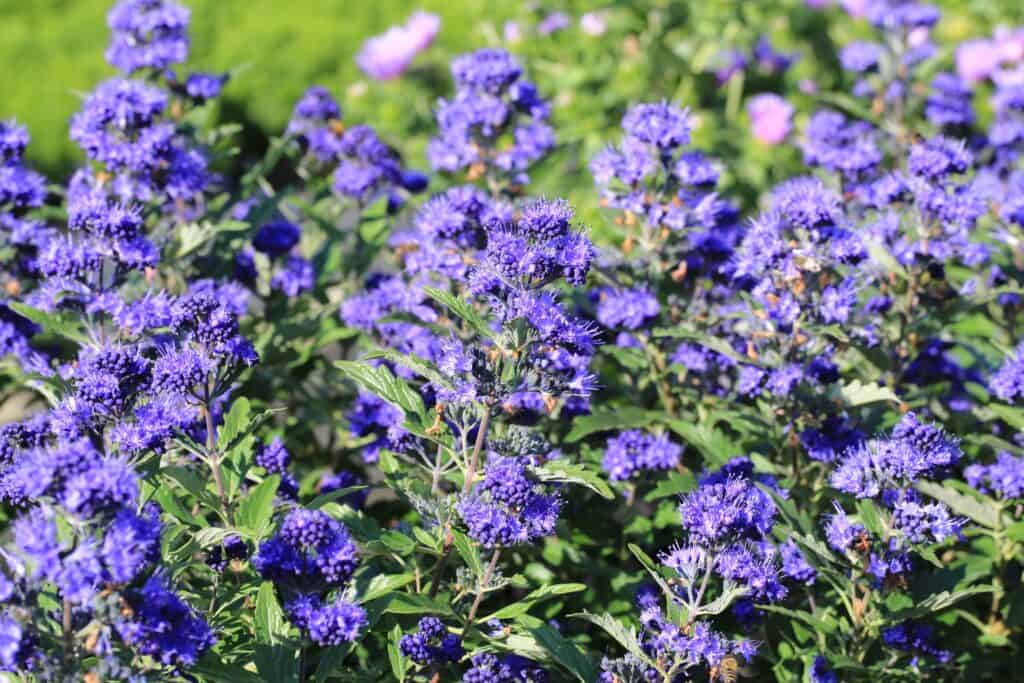
Over-fertilizing bluebeard can reduce the amount of blooms it produces.
©Traveller70/Shutterstock.com
Also commonly known as blue mist shrub, bluebeard grows to a height of 2-3 feet tall on average. Its low height makes the plant ideal for creating natural borders in a garden. Pollinators, including hummingbirds, bees, and butterflies, are attracted to the shrub’s blue flowers. A well-established bluebeard will usually produce flowers from July until September, drawing hummingbirds to your green spaces through the late summer and early fall. Sandy soil is best for bluebeard and they flourish in the full sun. In zones 6-9, bluebeards are considered hardy.
11. Camellia (Camellia japonica)
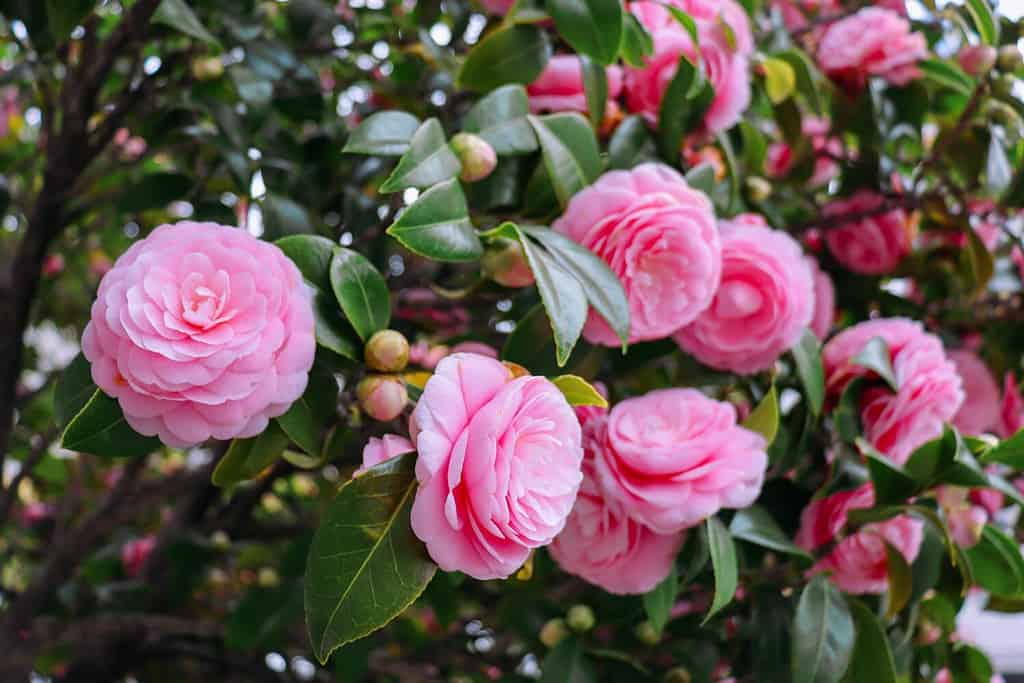
Camellias are associated with feelings of love or romance.
©Alina_Miyazaki/Shutterstock.com
A winter wonder, camellias bloom when many other flowering shrubs have stopped production for the year. On average, camellias bloom from October to mid-March, providing food for hummingbirds during the colder months. The flowers can vary in color from white to shades of red. Well-established camellias have been known to live more than 100 years! Camellias are considered cold-hardy in zones 7-9 but are susceptible to fungal diseases like root rot and black mold.
12. Crimson Bottlebrush (Melaleuca citrina or Callistemon citrinus)

The crimson bottlebrush is native to Victoria and New South Wales in Australia.
©lucky eyes/Shutterstock.com
With showy red flowers that resemble bristles, the crimson bottlebrush is capable of blooming year-round. The flowers can reach a length of four inches long. Hummingbirds are attracted to the vibrant color of the blooms while on the hunt for nectar. Although the crimson bottlebrush is considered drought-tolerant, it prefers moist soil with good drainage. Crimson bottlebrush is resistant to pests and diseases, and thrives in zones 10-11.
13. Pink Fairy Duster (Calliandra eriophylla)
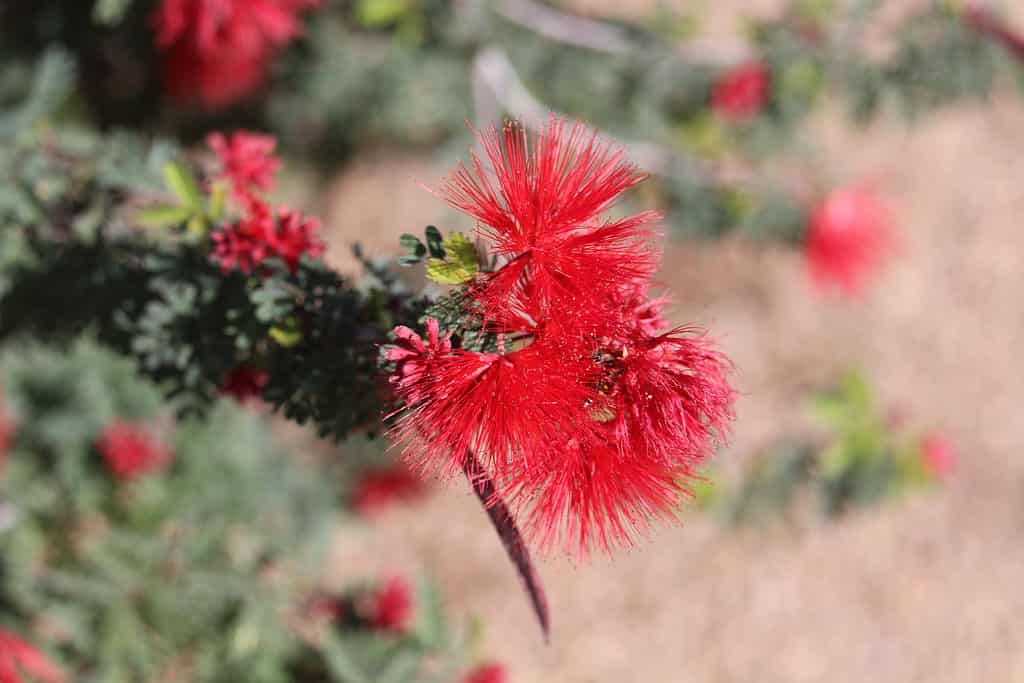
The leaves of the pink fairy duster close up when it gets dark.
©Selina S/Shutterstock.com
Native to the desert areas of western states, the pink fairy duster shows its stuff in springtime. When it blooms, the pink fairy duster produces flowers that look like powder puffs. The pink stamens of the bloom extend out from the center of the flower, drawing the interest of hummingbirds. Because the shrub does not grow large, normally reaching about five feet from the base, shearing is not recommended. Pink fairy duster is hardy in zones 8-11 and thrives in sandy soil and full sun.
14. Desert Honeysuckle (Anisacanthus thurberi)
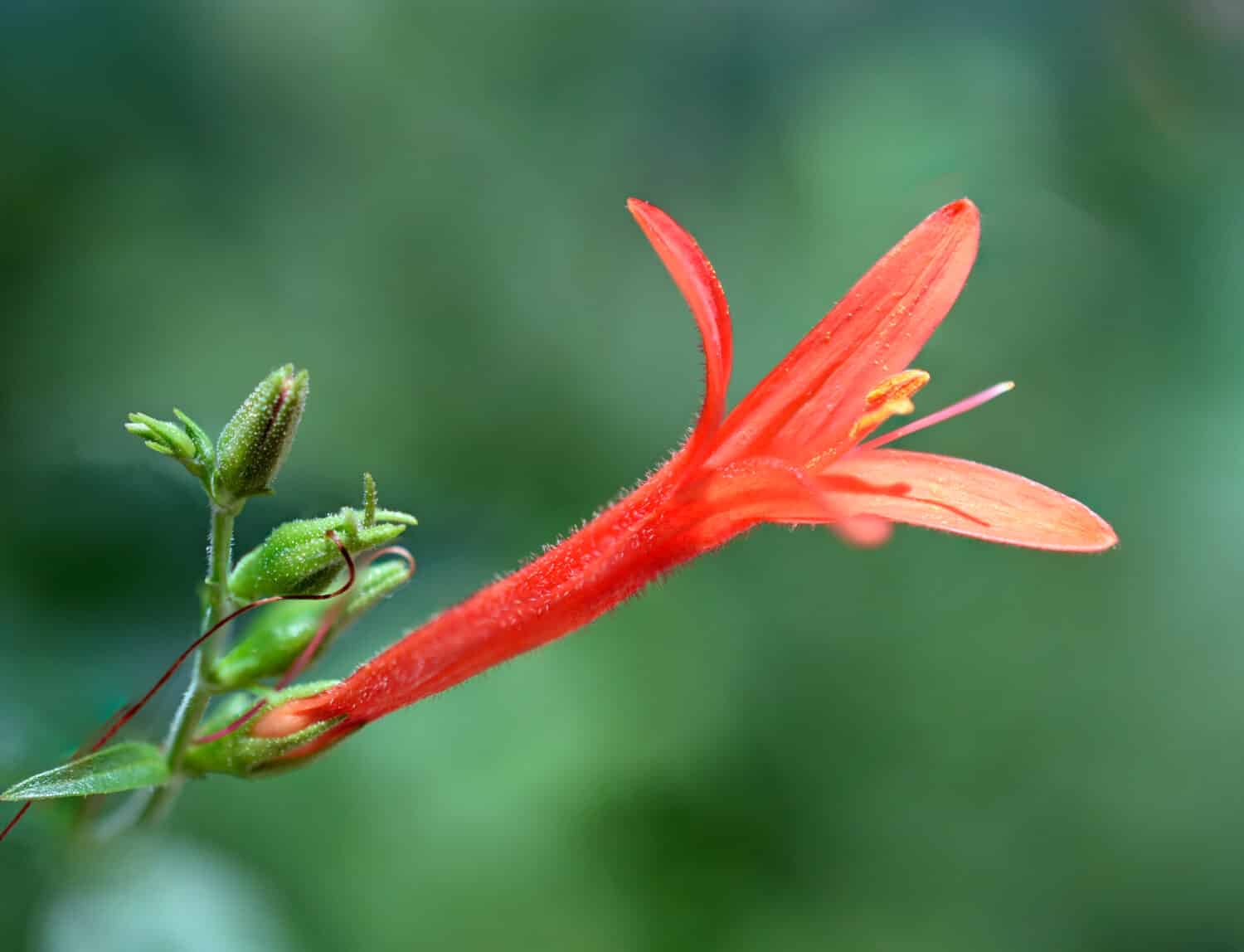
Desert honeysuckle blooms appear in the spring and sporadically afterward.
©KevinCupp/Shutterstock.com
Found in areas of New Mexico and Arizona, the desert honeysuckle lives in canyons, gullies, and sandy hillsides. Sometimes, desert honeysuckle is incorporated into the landscaping in those arid areas. The flowers, which can be red, yellow, or orange, are trumpet-shaped. In fact, desert honeysuckle blooms look much like the flowers of trumpet vine, a well-known hummingbird attractor. However, desert honeysuckle isn’t honeysuckle at all, but a member of the Acanthaceae family. With a low need for water and a love of rocky soil, the desert honeysuckle is hardiness-zoned for zones 8-11.
Summary of Flowering Shrubs for Hummingbirds
| Common Name | Scientific Name | USDA Hardiness Zones |
|---|---|---|
| Summersweet | Clethra alnifolia | 3-9 |
| Catawba rhododendron | Rhododendron catawbiense | 4-8 |
| Rose of Sharon | Hibiscus syriacus | 4-8 |
| Weigela | Weigela florida | 4-8 |
| Flowering quince | Chanenomeles speciosa | 4-8 |
| Glossy abelia | Linnaea x grandiflora | 5-9 |
| Butterfly bush | Buddleia davidii | 5-9 |
| Bluebeard | Caryopteris x clandonensis | 6-9 |
| Sweet viburnum | Viburnum odoratissimum | 7-9 |
| Camellia | Camellia japonica | 7-9 |
| Crepe myrtle | Lagerstroemia indica | 7-10 |
| Pink fairy duster | Calliandra eriophylla | 8-11 |
| Desert honeysuckle | Anisacanthus thurberi | 8-11 |
| Crimson bottlebrush | Melaleuca citrina or Callistemon citrinus | 10-11 |
Thank you for reading! Have some feedback for us? Contact the AZ Animals editorial team.








